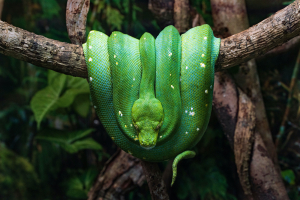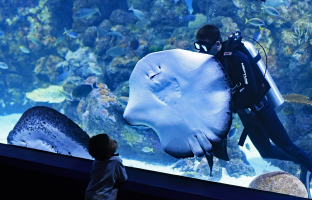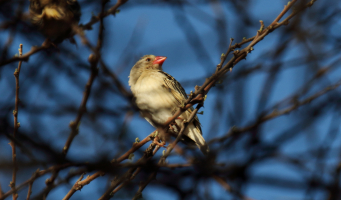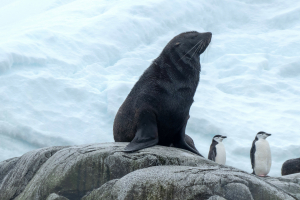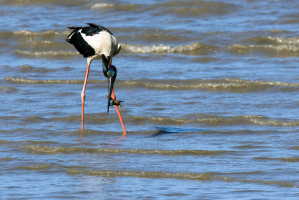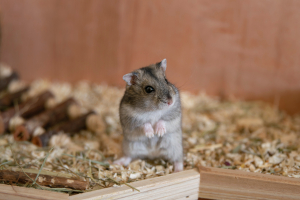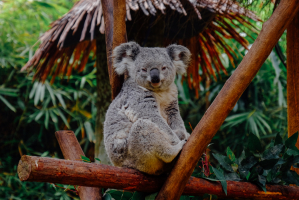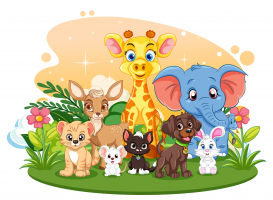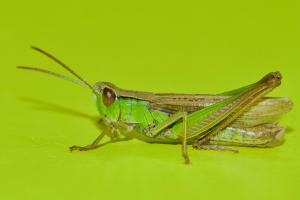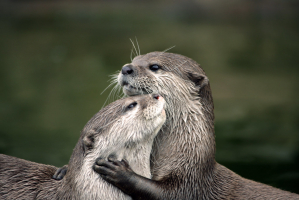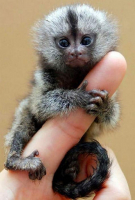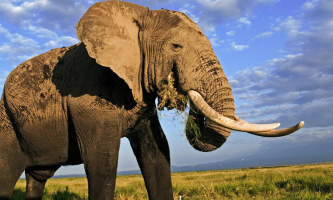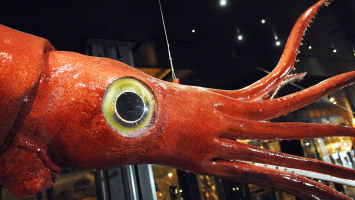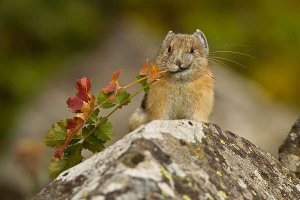Top 15 Animals That Start With L
Ever wonder what the animal kingdom has in store for the letter "L"? Buckle up because we're about to dive into a wild world where majestic lions roar and ... read more...sneaky leopards lurk in the shadows. Get ready to unravel the secrets of the animals that start with L with Toplist.
-
The lion is like the rock star of the animal kingdom, known for its majestic appearance and wild charm. These big cats are mainly chillin' in the savannas and grasslands of Africa, where they rule the roost.
Now, picture this: a lion with iconic golden fur and a big, glorious mane around its head – that's the dude. The mane is like a lion's crown, making him look like the king he truly is. The ladies, known as lionesses, dig that impressive hairdo too.
Lions are social animals, and they usually roll in crews called prides. It's like a big family reunion, with the king, his ladies, and some little cubs running around causing a stir. Teamwork is their thing when it comes to hunting. The ladies do most of the hunting while the king chills and protects the pride's territory.
At mealtime, lions go for a variety of packs – zebras, wildebeests, and other tasty creatures. They're not too picky; it's fair game if it moves and looks delicious.
These big cats are not just about the glam – they've got the roars to match. A lion's roar can be heard from miles away, and it's like their way of saying, "Hey, I'm the boss around here." Lions might laze around during the day, catching some Zs under a shady tree, but when the sun sets, they come alive. Night time is prime time for their adventures.
In a nutshell, lions are the cool cats of the wild – big hair, big roars, and a lifestyle that mixes lazy days and wild nights. They're the true kings and queens of the jungle, and everyone knows it.
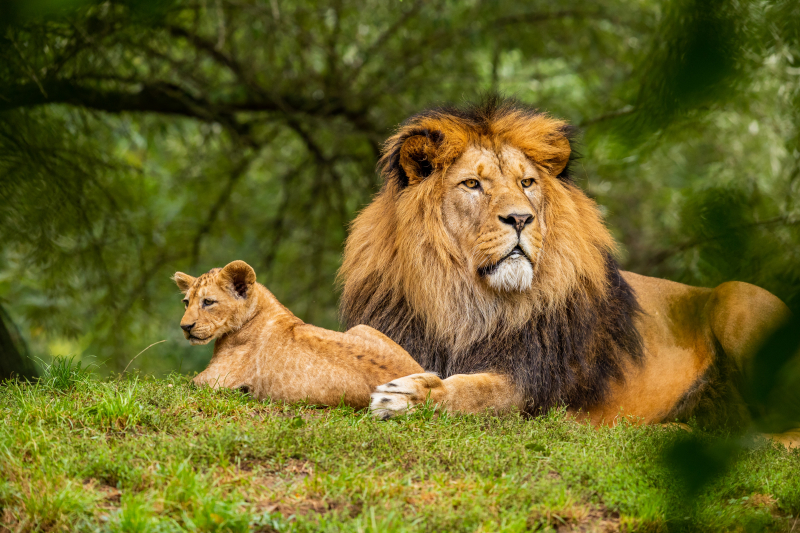
Photo by Zdeněk Macháček on Unsplash: https://unsplash.com/photos/brown-lion-on-green-grass-field-UxHol6SwLyM Video by @NatGeoWild -
Leopards are like the stealthy ninjas of the wild, known for their sneaky moves and beautiful spotted coats. You'll spot these cool cats prowling around in Africa and some parts of Asia, looking all sleek and stylish.
You can image a leopard with golden or pale yellow fur covered in spots called rosettes. It's like wearing a fancy outfit all the time. They've got these cool patterns that make them stand out in the jungle crowd.
Now, these guys are solo artists. They're not big fans of the family scene like lions; leopards prefer going solo. But hey, they're pretty good at it. They're fantastic climbers, masters of stealth, and can haul heavy prey up trees to keep it safe from sneaky scavengers. When it's chow time, leopards go for a range of meals – from small creatures like rodents to bigger snacks like antelopes. They're pretty versatile eaters.
Their fashion game might be on point with those spots, but they have skills, too. Leopards can run super fast and climb trees like pros, and their jumps? Absolutely insane. They're like the acrobats of the wild.
These felines are not big on small talk; they're more about action. They're quieter than some other big cats, but when they make a sound, it's a variety of growls, purrs, and snarls. Leopards are night owls, thriving when the sun goes down. They're all about hunting and exploring under the stars, living their best adventurous lives when everyone else sleeps.
Leopards are the stealthy, stylish ninjas of the jungle. They've got the moves, the looks, and the skills to survive on their own terms. They might not be the loud ones, but they're definitely the cool, mysterious ones.
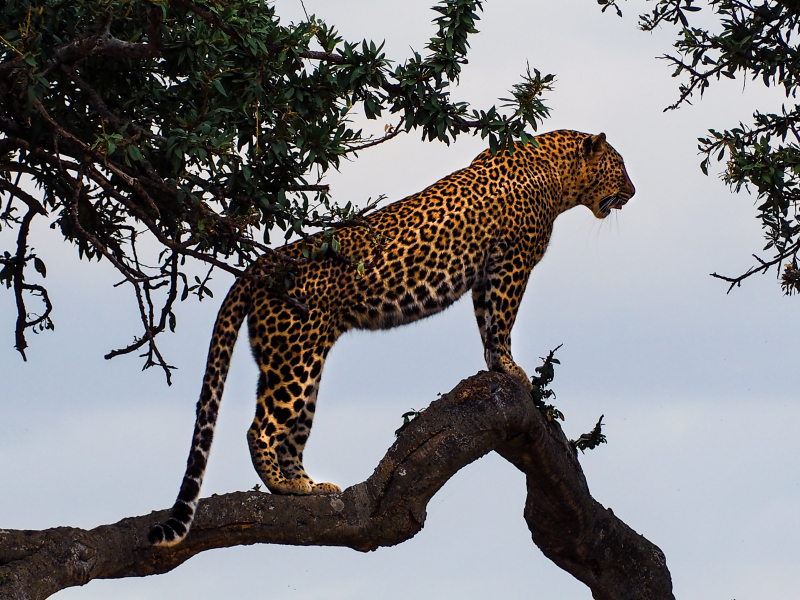
Photo by Bibake Uppal on Unsplash: https://unsplash.com/photos/leopard-standing-on-a-tree-branch-83uG2S0aT_I Video by @bbcearth -
Llamas are like the chill buddies of the animal world, known for their fluffy appearance and easygoing vibes. You'll find these incredible creatures in South America, rocking their long necks and cozy fur.
Imagine a big, fluffy friend with a long neck and big, soulful eyes – that's a llama. Their fur can be all sorts of shades, from white and brown to shades of gray. It's like they're always wearing a comfy, natural sweater. Llamas prefer to roll in groups called herds. It's like having a llama squad, and they look out for each other. Teamwork is their thing when it comes to staying safe from predators.
These guys are nature's backpackers. Llamas can carry loads on their backs, making them the perfect hiking buddies. They're like the backpackers of the animal kingdom, always ready for an adventure.
Now, llamas are not picky eaters. They enjoy munching on grass, leaves, and whatever green goodness they find. They've got those fancy, banana-shaped ears that can move independently, always on the lookout for snacks and sounds.
Llamas are the zen masters of the animal world. When faced with danger, instead of fighting, they might spit. Yep, they're not afraid to express themselves. It's like their way of saying, "Hey, back off, I'm enjoying my llama life." These animals are small in speed, but they've got stamina. Llamas can trek for miles without breaking a sweat, making them the marathon walkers of the Andes.
Llamas are the laid-back, furry buddies you'd want on your team. They're all about good vibes, teamwork, and enjoying the simple pleasures of llama life. Whether carrying a load or chilling with their llama crew, these guys know how to keep it cool in the animal kingdom.
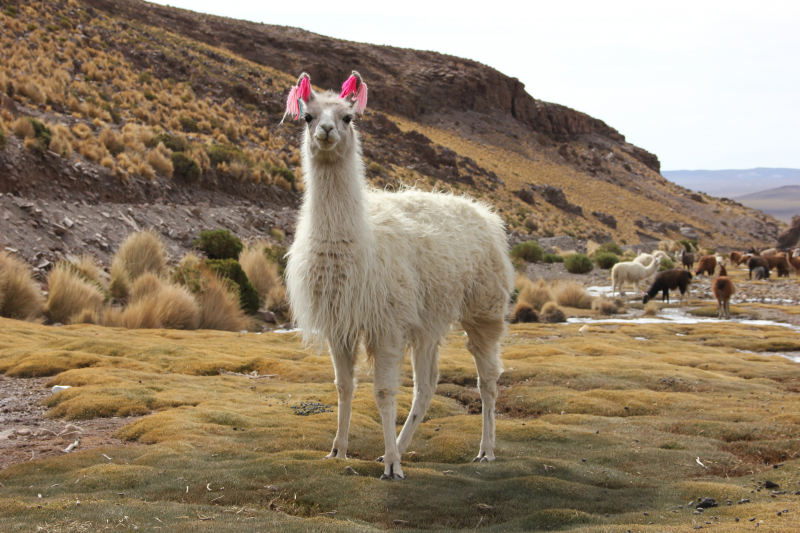
Photo by Danielle Barnes on Unsplash: https://unsplash.com/photos/white-llama-RUSijmFDm0M Video by @thelistshowtv -
Lynxes are like the stealthy cats of the forest, known for their pointy ears and cool fur. You can spot these awesome cats in parts of Europe, Asia, and North America, blending in with their surroundings.
Imagine a cat, but bigger and fluffier, with these fancy, tufted ears sticking up – that's a lynx. Their fur is shades, usually gray or brown, with spots that help them hide in the woods. It's like they're wearing a camo jacket to stay incognito.
Lynxes are kinda introverted; they like flying solo. These guys are the lone rangers of the wild, doing their own thing without needing a big, noisy crew. They're excellent at hiding, blending their spots with the surroundings like camouflage artists.
They have this fancy fashion statement – their spotted coat. It's like they're wearing a patterned jacket, making them the trendsetters of the forest. The spots help them hide and be stealthy when they prowl for food. When it's mealtime, lynxes are all about the fancy diet. They go for gourmet options like rabbits, rodents, and maybe a bird or two. They're picky eaters but have a taste for the good stuff.
Lynxes are not the vocal type. They keep it quiet, communicating through meows, purrs, and hisses. They've mastered the art of silent coolness in the animal kingdom. They're fantastic jumpers, like the high jump champions of the wild. Lynxes can pounce on prey from a distance, showing their impressive acrobatic skills.
In conclusion, lynxes are the sneak, stylish solo artists of the wild. They've got the looks, the moves, and the attitude to make them the cool cats of the forest. Whether blending in with their spots or showcasing their jumping skills, lynxes know how to keep it low-key and excellent in the wild.
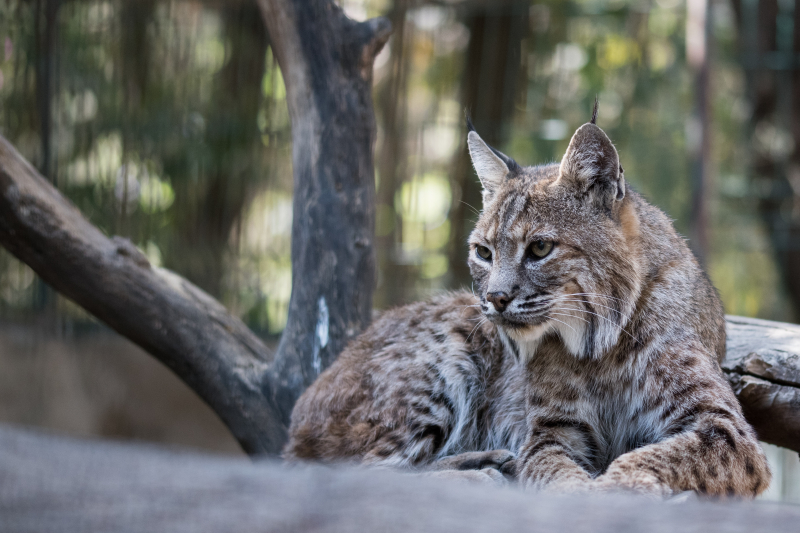
Photo by Uriel Soberanes on Unsplash: https://unsplash.com/photos/grey-cat-lying-on-tree-branch-eAfDPzehe2I Video by @bbcearth -
Lemurs are like the party animals of Madagascar, known for their big, wide eyes and playful antics. These funky primates are all about chilling in the trees and having a blast in the forests of Madagascar, their home turf.
This is a furry friend with huge, expressive eyes that look like they've seen it all – that's a lemur. They come in different colors, from shades of gray to reddish-brown, but what stands out are those big, soulful eyes.
Now, lemurs are not loners; they're the ultimate social butterflies. They live in groups called troops, like a big, happy family swinging around the trees. They love hanging out, grooming each other, and just having a good time.
Lemurs are like the acrobats of the forest. They're fantastic climbers, quickly leaping from tree to tree, using their solid tails for balance. It's like watching a circus act in the wild. These guys have an excellent way of communicating. Instead of words, they use a mix of calls, like chirps, clicks, and even howls, to chat with their lemur pals.
When it's grub time, lemurs go for a mix of foods – fruits, leaves, insects, you name it. They're not picky eaters; it's fair game if it's tasty and within reach. Lemurs are not the biggest fans of direct sunlight; they're more into that shady life. They're mostly active in the daytime, enjoying the forest while everyone else is up and about.
Lemurs are lively, fun-loving party animals swinging around Madagascar. With their big eyes, tree-hopping skills, and social vibes, they're the life of the jungle party. Whether munching on fruits or putting on a tree-top show, lemurs know how to keep the good times rolling in their wild playground.
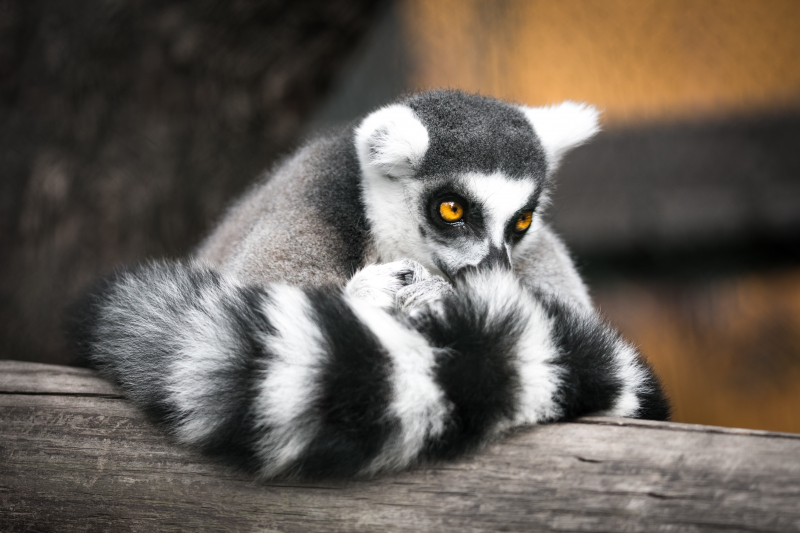
Photo by Uriel Soberanes on Unsplash: https://unsplash.com/photos/shallow-focus-photography-of-gray-and-black-lemur-HwMxe5F6KtA Video by @NatGeo -
Lobsters are like underwater rockstars, with their fancy claws and laid-back vibe. These cool crustaceans chill in oceans worldwide, sporting their armored bodies and big, muscular tails. A lobster, rockin' a rigid shell that comes in shades of blue, green, or red. But what steals the show? Those massive claws! They're like the lobster's secret weapons, ready to snap and grab whatever comes their way.
Lobsters are all about the underwater community life. They hang out in groups, known as schools or beds, and they're all about sticking together. Safety in numbers, you know? They crawl around the ocean floor and are not shy about showing off their pincers. It's like they've got their own underwater party going on.
Lobsters are like gourmet chefs at mealtime – they go for a variety. They munch on fish, crabs, clams, and even seaweed. These guys are not fussy eaters; if it's on the menu and tastes good, it's a lobster feast.
These crustaceans have got moves, too. Lobsters can swim backward using their powerful tails, and those big claws are not just for show – they're for grabbing and crushing their meals. And these guys are serious about fashion. Their hard shell is not just for protection; it's their stylish armor. They shed their shells in a molting dance as they grow, revealing a new, softer one underneath.
Communication? Lobsters have their own way of chatting. They use their antennae and make clicking sounds to talk to each other. It's like their own underwater Morse code. When it's chow time, lobsters go for the seafood buffet. They munch on small fish, clams, crabs, and even other lobsters. They're not fussy eaters; if it's seafood, it's on the menu.
In a shell... uh nutshell, lobsters are the tough, cool dudes of the ocean floor. They're the ocean's rockstars with their claw power, social hangouts, and underwater adventures. Whether cruising along the seabed or feasting on seafood delights, lobsters know how to keep it cool in their underwater world.
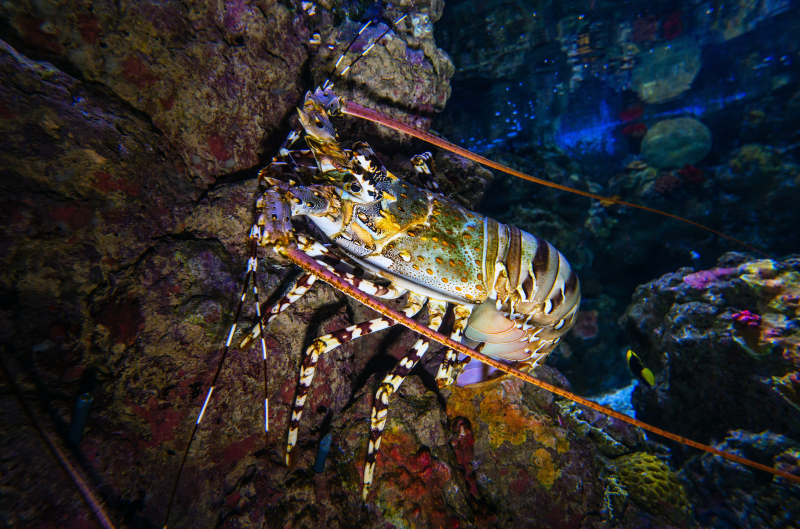
https://www.youtube.com/@FreeDocumentaryNature: https://unsplash.com/photos/brown-and-black-fish-in-fish-tank-p1D68SxmdtY Video by @FreeDocumentaryNature -
Leatherback sea turtles are like the big, friendly giants of the ocean, known for their massive size and unique shells. These fantastic creatures paddle through the seas, making waves across the globe.
A sea turtle the size of a small car, with a shell that's not hard like most turtles but soft and rubbery, almost like leather – that's the leatherback. They're the heavyweight champs of the turtle world, with a shell that looks like it's made of tough leather.
These guys are the globetrotters of the sea. They swim in oceans worldwide, from the cold Arctic to the tropical waters. They're not picky about where they roam; they're just on a massive adventure. Leatherbacks are more about doing their own thing. They're like solo travelers cruising through the oceans, exploring new territories without needing a big turtle crew.
When it's mealtime, leatherbacks are all about the jellyfish diet. They love munching on these squishy creatures, like the ultimate jellyfish hunters in the sea. These spiky parts in their mouth help them chow down on jellies without getting stung. These turtles are fast swimmers, reaching up to 22 miles per hour. They're like the Olympic sprinters of the sea, gliding through the water with ease.
Humans are rooting for these sea giants because they're like the ocean's heroes. Leatherbacks help control jellyfish populations, keeping the ocean ecosystem in balance. People love these turtles and work hard to protect them because they face threats like getting caught in fishing gear or ocean pollution. Conservation efforts focus on safeguarding their nesting beaches and reducing threats to keep these incredible creatures thriving in the wild.
Leatherback sea turtles are the mighty, globe-trotting giants of the ocean. With their soft shells, jellyfish feasts, and ocean adventures, they're the legends of the sea. Whether cruising solo or playing their role in the big ocean story, leatherbacks are the real VIPs of the deep blue.

Photo by Dustin Haney on Unsplash: https://unsplash.com/photos/underwater-photography-of-sea-turtle-s6B6mlgqIjk Video by @BBC -
Lorikeets are like the tropical party animals of the bird world, known for their vibrant feathers and lively personalities. These colorful birds are the life of the avian party, spreading their cheer in various parts of the world, especially in Australia, Asia, and the Pacific islands.
A lorikeet is a small, feathery friend with a rainbow of colors covering its body. They've got this vibrant mix of blues, greens, reds, and yellows, like a walking palette of tropical beauty. At mealtime, lorikeets go for the fruity feast. They enjoy munching on fresh fruits, pollen, and, of course, nectar.
Lorikeets are the social butterflies of the sky. They love hanging out in groups, chirping, and sharing the latest bird gossip. It's like a never-ending avian get-together with these guys. These birds are nectar enthusiasts. They're like the sweet-toothed connoisseurs of the bird world. Lorikeets have specialized brush-tipped tongues designed for slurping up nectar from flowers. It's like they're sipping on nature's sweet smoothies all day long.
Lorikeets are not just about looking pretty; they also have some dance moves. These birds are known for their playful antics, hopping around branches and showing off their acrobatic skills. It's like a feathered dance party happening in the trees. Humans adore lorikeets for their vibrant colors and friendly nature. Some people even keep them as pets, creating a burst of tropical colors in their homes.
Lorikeets are the bird world's lively, colorful party animals. With their vibrant feathers, love for nectar, and playful dance moves, they bring a tropical fiesta wherever they go. Whether hanging out in bird squads or brightening someone's home, lorikeets know how to keep it fun and fabulous in the sky.
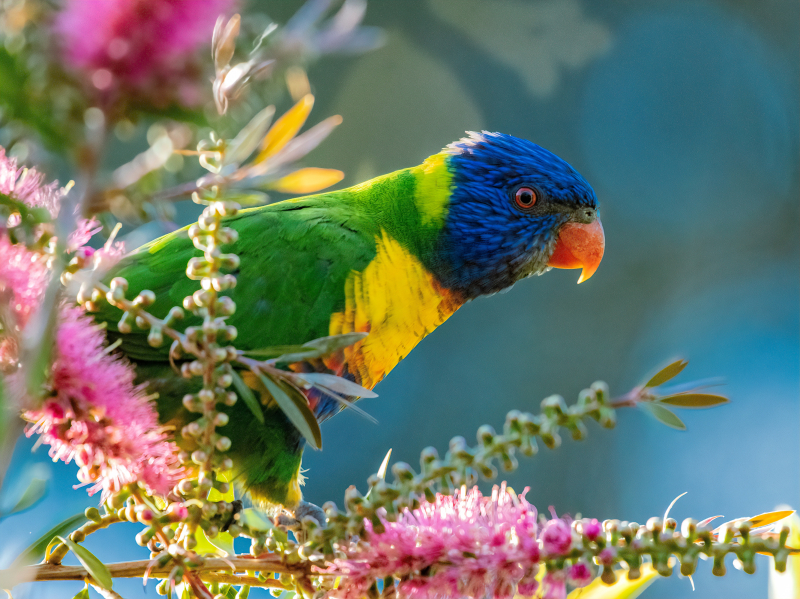
Photo by Trevor McKinnon on Unsplash: https://unsplash.com/photos/lorikeet-on-pink-flower-F5ypWjjulqw Video by @4EverGreenYT -
Leopard frogs are like the cool hoppers of the pond, known for their spotted style and lively jumps. These amphibians are the party starters in wetlands and ponds across North America, showing off their unique look and playful vibes.
Imagine a frog with bright green skin covered in spots that look like leopard prints – the leopard frog. They've got this fashionable style that makes them stand out among other frogs. Leopard frogs are the socialites of the swamp. They hang out in groups near ponds, swapping croaks and playing leapfrog. It's like a hopping hangout in the wetland.
These frogs are the jump champs of the pond. They've got strong legs that let them hop long distances, moving around the wetlands like Olympic athletes. It's like watching a froggy high-jump competition!
When it's grub time, leopard frogs go for a menu that includes insects, spiders, and even smaller frogs. They're not fussy eaters; it's fair game if it's small, wriggly, and tasty. Leopard frogs have a unique way of talking; they make chuckling sounds instead of croaks. They're sharing a froggy joke with their buddies in the pond.
Humans appreciate leopard frogs for their natural bug-control skills. By munching on insects, they help keep the insect population in check, making them the unsung heroes of the wetlands.
In conclusion, leopard frogs and sociable pond hoppers are spotted. With their stylish patterns, impressive jumps, and insect-eating talents, they bring a lively vibe to the wetland scene. Whether croaking in a froggy chorus or showing off their leaping skills, leopard frogs know how to keep it cool in the watery world.
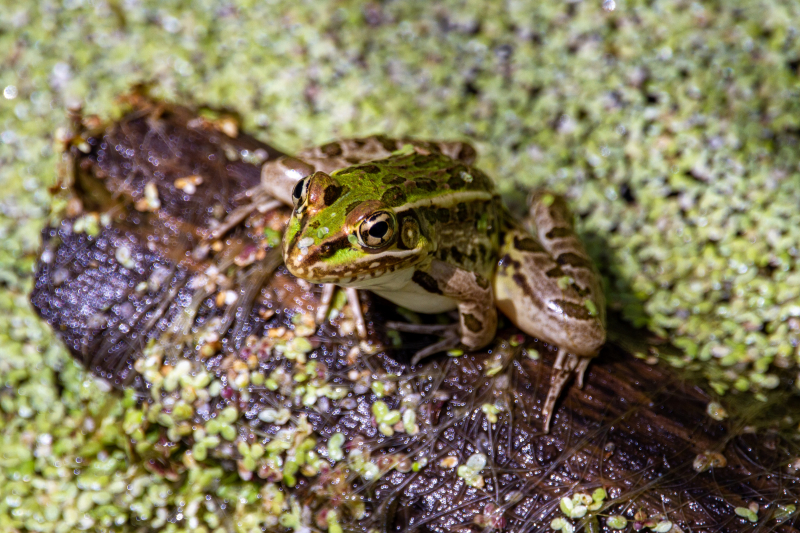
Photo by Joshua J. Cotten on Unsplash: https://unsplash.com/photos/green-frog-on-green-moss-1uPEmHZHbdY Video by @georgiatech -
Labrador Retrievers are like the goofballs of the dog world, known for their friendly nature and wagging tails. These awesome pups are popular pets worldwide, stealing hearts with their lovable personalities.
Imagine a super friendly dog with a shiny coat that comes in colors like black, yellow, or chocolate – that's a Labrador Retriever, or Lab for short. They have these adorable, expressive eyes that make you want to play fetch all day long. Labs are the ultimate family pals. They're great with kids, love meeting new people, and think everyone's their best friend. They've got this never-ending energy that keeps the fun going.
Now, these dogs are all about adventure and action. Labs are like the sports stars of the dog park. They're fantastic swimmers, love chasing balls, and are up for any game you throw their way. They're basically game for anything – hiking, swimming, you name it!
At chow time, Labs are not picky eaters. They're big fans of mealtime and will gobble up their dog food faster than you can say "treat." But watch out, they might mistake anything edible for a snack! Labs also have some smarts. They're super trainable and often work as guide dogs, search and rescue heroes, or even therapy dogs. They're like the all-around MVPs of the dog world.
People adore Labs for their happy-go-lucky attitude and loyalty. They're not just pets but family members who bring joy and laughter to any home. Labrador Retrievers are the fun-loving, friendly champs of the dog universe. With their wagging tails, playful spirits, and love for adventures, they're the ultimate companions. Whether fetching a ball or cuddling on the couch, Labs knows how to make life much brighter for their human pals.

Photo by Aaron James on Unsplash: https://unsplash.com/photos/a-dog-sitting-in-a-field-HGnZKZJ1LCk Video by @AnimalWised -
Loons are like the rockstars of the lakes, known for their haunting calls and sleek looks. These remarkable birds are the vibe-setters of the waters, hanging out in lakes across North America.
Loons are like the guardians of the lakes, sporting a stunning black-and-white pattern, a sleek build, and a beak that means business. They're the incredible birds hanging out in freshwater lakes, enjoying the peaceful waters, and diving for fish. What sets loons apart is their unique voice – it's hauntingly beautiful. Their calls echo across the lake, almost like they're performing a nature concert for everyone around.
Diving is where loons excel. They're like the Olympic divers of the bird world, plunging underwater to catch their favorite meals - fish. These birds can stay submerged for quite a while, showing off their underwater hunting skills.
Come nesting time, loons become family-oriented. They build their cozy nests near the water, raising their chicks in the lakeside comfort. They're like the family-focused folks of the bird community.
Humans have a soft spot for loons. They symbolize peaceful lake living, and their calls create a serene atmosphere on summer nights. Watching these birds gracefully glide across the water adds a touch of wild beauty to any lake scene.
In summary, loons are the enigmatic guardians of North American lakes. With their striking appearance, soul-stirring calls, and remarkable diving abilities, they bring a unique charm to the serene waters. Whether diving for dinner or harmonizing their calls across the lake, loons make a splash in the watery world.
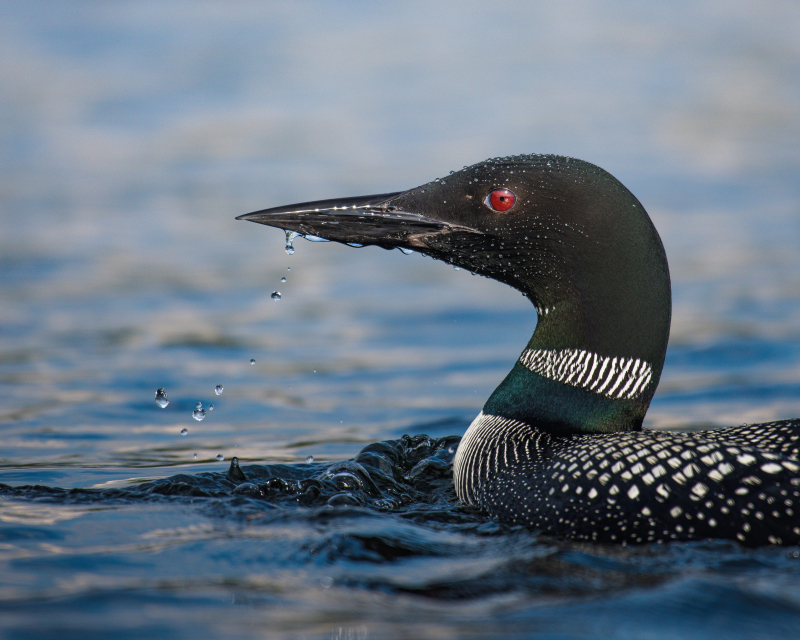
Photo by Jeremy Hynes on Unsplash: https://unsplash.com/photos/black-and-white-duck-on-water-ZHBirQgjV6I Video by @HarryCollinsPhotography -
Locusts are like the rowdy party crashers of the insect world, known for their massive swarms and crop-chomping habits. These bugs enter different parts of the world, causing a buzz with their numbers and munching power.
Imagine a grasshopper that can change its behavior and appearance drastically. When conditions are just right – like lots of food and warm weather – these chill hoppers band together and transform into a swarm of locusts. It's like a bug makeover party!
When locusts gather, it's like a bug block party. They're social insects and love hanging out in huge groups, munching away on anything green they can find. From leaves to crops, they're okay in their swarm mode.
The damage they can do is pretty wild. Locusts are like the voracious eaters of the bug world. When they swarm, they clear entire fields faster than you can say "snack time." Their massive appetites can cause significant problems for farmers trying to protect their crops.
Humans have been trying to manage locusts for ages, finding ways to control these bug parties and protect crops. Farmers use different strategies, from pesticides to natural methods, to keep these pests in check and minimize the damage.
In a nutshell, locusts are the ultimate bug transformers, going from peaceful grasshoppers to crop-eating swarms. Their social habits and huge appetites bring challenges to farming communities worldwide. Whether they're chilling as grasshoppers or causing chaos in massive swarms, locusts know how to impact the insect world.
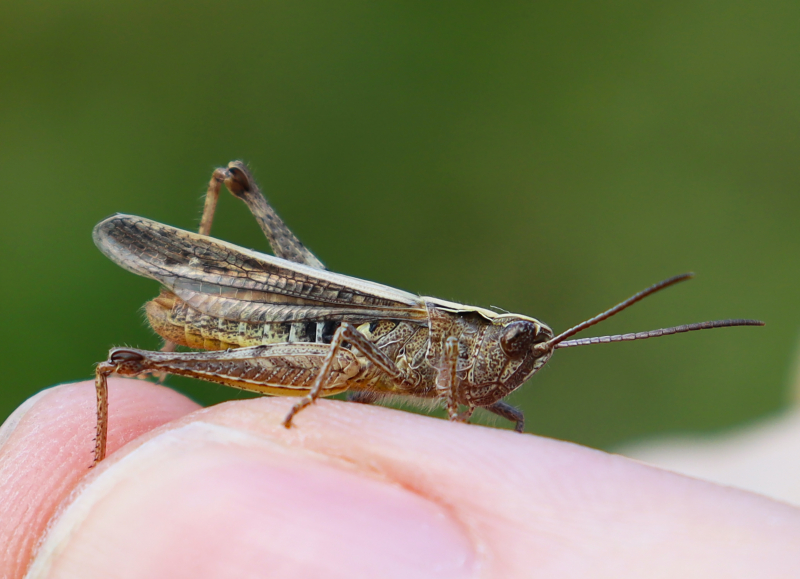
Photo by Rick van Houten on Unsplash: https://unsplash.com/photos/brown-grasshopper-on-persons-hand-knc-E-jDxiw Video by @bbcearth -
Leopard seals are like the cool, sleek predators of the icy waters, known for their powerful presence and distinct spotted coats. These remarkable creatures roam the Antarctic, ruling the chilly seas with their unique style.
Imagine a big, muscular seal covered in spots – that's a leopard seal. Their striking appearance with their spotted coats makes them stand out among other seals. It's like they're the spotted superstars of the icy waters.
Leopard seals are the lone rangers of the Antarctic. They're not into big social gatherings like other seals; they prefer cruising solo, ruling their territories, and hunting on their own terms. They're like the independent adventurers of the frigid seas.
When it comes to dinner, leopard seals are top-notch hunters. They're skilled at capturing fish, penguins, and other seals, showing their underwater agility and speed. Their diet is like a gourmet seafood feast, including krill, squid, and various marine creatures. They communicate with different sounds, from eerie calls to grunts, perhaps announcing their presence or chatting with others in the depths.
Humans find leopard seals fascinating but keep their distance. These seals are powerful predators, and while they might seem curious, it's best to admire them from afar in their natural icy habitat.
Leopard seals are the solitary, sleek hunters of the Antarctic waters. With their spotted coats, impressive hunting skills, and independent spirit, they're the cool rulers of the icy seas. Whether cruising solo or hunting for a gourmet meal underwater, leopard seals truly own their domain in the frozen waters.
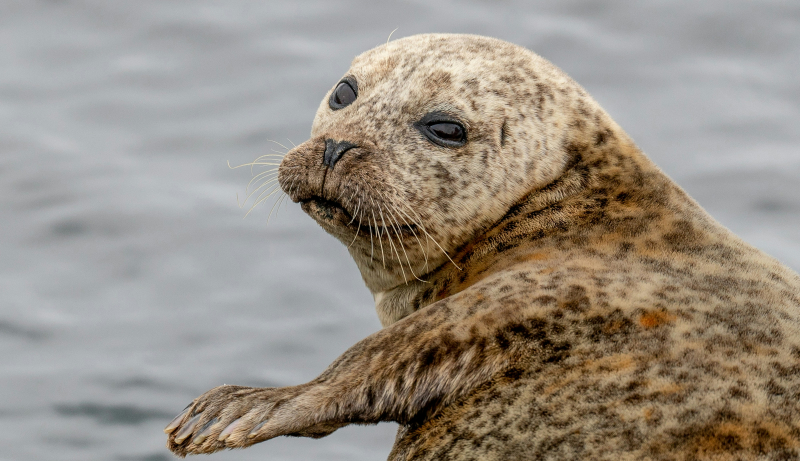
Photo by Bob Brewer on Unsplash: https://unsplash.com/photos/brown-and-black-leopard-on-water-SwwaMXn9b5E Video by @NatGeo -
Ladybugs are like the little red-and-black superheroes of the bug world, known for their cute appearance and knack for gobbling up pests. These tiny insects flutter around gardens and fields, bringing good luck and pest control wherever they go.
These bugs love an excellent social gathering. You'll often find ladybugs hanging out in groups, perched on leaves or stems, enjoying the sunny spots in gardens. It's like a small, colorful insect party!
But don't let their cute appearance fool you; ladybugs are hard workers. Their feeding habits make them superheroes of pest control. Ladybugs feast on harmful insects that damage plants, effectively acting as nature's defense system without the need for harmful chemicals. They're like the vigilant guardians of the garden, ensuring a healthy environment for plants to thrive.
At mealtime, ladybugs are the ultimate predators. They voraciously feed on these garden pests, helping keep the plant world in balance without the need for harmful chemicals. They're like the garden's tiny guardians, protecting it from little troublemakers.
Beyond their role in gardens, ladybugs hold a special place in human culture. They're seen as symbols of good luck and prosperity in many cultures around the world. People even believe that good fortune is on the way if a ladybug lands on you. The belief in their luck-bringing qualities is so strong that a ladybug landing on someone is often seen as a positive omen.
In a nutshell, ladybugs are cute, beneficial bugs that bring smiles to gardens and fields. With their charming appearance, social vibes, and incredible pest control skills, they're like the little superheroes of the bug world. Whether munching on pests or bringing good luck, ladybugs know how to spread joy in nature.
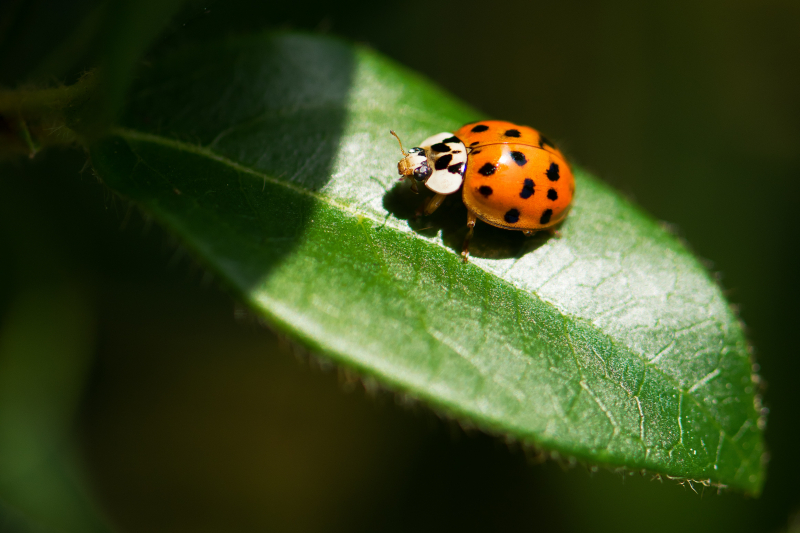
Photo by Vincent van Zalinge on Unsplash: https://unsplash.com/photos/closeup-photography-of-ladybug-on-leaf-oBL5QRAxZzo Video by @TheDodo -
Langurs are like the tree-dwelling acrobats of the monkey world, known for their long tails and black faces. These fantastic creatures swing through the trees in various parts of Asia, showing their agility and distinct appearance.
A monkey with a sleek body covered in fur ranging from shades of gray to golden hues, sporting a striking black face – that's the langur. Their contrast of colors gives them a unique and appealing look. These monkeys are always on the go, rarely staying still. They're masters of the treetops, swinging effortlessly from branch to branch, showcasing their acrobatic skills in the forest canopy.
Langurs live in groups called troops, and they're a tight-knit bunch. They're like the extended monkey family, looking out for each other while exploring the treetops and keeping an eye out for any danger. They communicate through subtle sounds like grunts or soft calls, preferring to keep things tranquil as they move through their tree-bound homes.
When it comes to food, langurs are herbivores. They enjoy a diet consisting of leaves, fruits, and sometimes flowers. Their vegetarian lifestyle shapes their activities as they forage for plant-based meals in the forest.
Langurs hold a special place in various cultures. People admire langurs for their unique appearance and graceful tree maneuvers. These monkeys are exceptional in multiple cultures and are often seen as symbols of agility and vitality.
In conclusion, langurs are the agile, tree-dwelling acrobats of Asian forests. With their striking appearance, love for trees, and vegetarian diets, they bring a unique charm to the canopy. Whether swinging through the branches or enjoying a leafy meal, langurs embody the beauty and agility of the wild jungle.
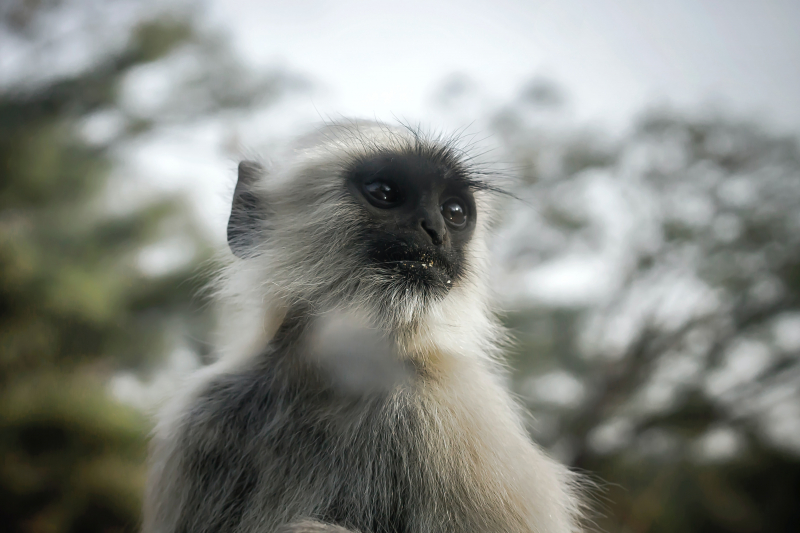
Photo by Chirayu Sharma on Unsplash: https://unsplash.com/photos/a-close-up-of-a-monkey-with-trees-in-the-background-11PsBKJKbsQ Video by @BBC

















